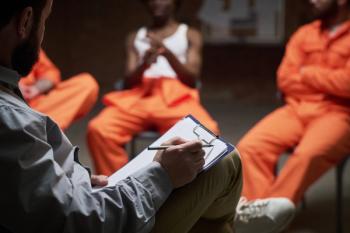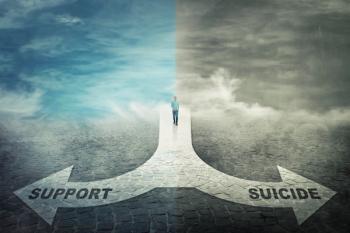
- Vol 33 No 1
- Volume 33
- Issue 1
Mounties, Cowboys, Avengers-and the Cultural Script of Gun Violence
Gun violence by alienated, disgruntled individuals isn't new. So what changes may help account for our recent spate of mass shootings?
COMMENTARY
In the aftermath of the horrific shootings at Umpqua Community College in October, the country has witnessed more than a dozen mass shootings.a In their wake, the same oversimplified “causes” are trumpeted furiously until their tune fades away-only to return for an encore after the next shooting. We hear again the familiar lyrics that “nobody in their right mind” would commit such an atrocity-therefore, “mental illness” must be to blame. And, predictably, there is the cacophony of armchair psychoanalyzing and lurid publicizing of the perpetrator.
Thus, it bears repeating that the link between violence and mental illness is weak. Persons with severe mental illnesses, such as schizophrenia, account for
While mass shootings (involving 4 or more victims) are often perpetrated by emotionally disturbed individuals, there are no reliable clinical data showing that most mass shooters have specific psychiatric disorders. A recent review concluded that:
Mass murderers who capture media attention often appear to be suffering from psychosis. However, no research has clearly established that most are psychotic or even suffering from a serious mental illness (SMI). In contrast, individual case studies examining the psychological makeup of mass murderers often reveal paranoid themes in their cognitions.
Even when a psychiatric disorder has been confirmed, there is no solid evidence that the shooter was motivated by the symptoms of that disorder, as opposed to long-standing resentment, rage, or narcissism. In most cases, we have neither a full psychiatric evaluation nor a complete “psychological autopsy” of the shooter, making formal diagnosis impossible.2
A tale of two cultures
[[{"type":"media","view_mode":"media_crop","fid":"45009","attributes":{"alt":"","class":"media-image media-image-right","id":"media_crop_6935429801233","media_crop_h":"0","media_crop_image_style":"-1","media_crop_instance":"5079","media_crop_rotate":"0","media_crop_scale_h":"209","media_crop_scale_w":"200","media_crop_w":"0","media_crop_x":"0","media_crop_y":"0","style":"font-size: 13.008px; line-height: 1.538em; height: 183px; width: 175px; float: right;","title":" ","typeof":"foaf:Image"}}]]We believe that a broader, socio- cultural perspective on gun violence is in order. Compared with most other high-income countries, firearm homicide rates in the US are nearly 20 times higher. For example, the rate of gun-related violence in Canada is about one-sixth that of the US. But the differences between the US and Canada go deeper. As policy analyst David B. Kopel observed nearly 25 years ago, “. . . the American national character has been shaped by the violent, armed assertion of national independence, whereas Canada has been shaped by a reaction against the American tradition of armed violence.”3 And, in a 1992 book, Kopel contrasted the figure of the “Mountie” (of the Royal Canadian Mounted Police) with that of the archetypal American “Cowboy.”4 Kopel observed that the Mounted Police maintained tight control of Canada’s early western settlements and that the “six-shooter” never became the symbol of Canadian freedom.b
In contrast, law and order was maintained locally in the early American West-think Wyatt Earp, Marshall Dillon, and the Winchester rifle, “the gun that won the West.” Indeed, our cultural heritage is filled with stories linking guns with heroism, freedom, and taming the wild frontier. Ironically, the “Wild West” often had stricter gun laws than do some states today. Thus, history professor
Tragically, in recent decades, American culture’s Cowboy archetype has been replaced by the angry, narcissistic Avenger. Detailed case analyses of mass shooters typically reveal aggrieved, resentful individuals with long-festering fantasies of violent revenge.2 Such individuals function (sometimes marginally) in society and usually shun mental health treatment. To be sure, mental health professionals can help troubled individuals willing to engage in “talk therapy” and other effective interventions, such as medication or substance abuse counseling-but unfortunately, the mass shooter’s persecutory, narcissistic mindset subverts such willingness. Instead, he seeks a form of “reverse specialness.” By becoming a lone protester against an “unjust” world, the mass shooter settles for a form of pseudo-power that allows him to “win by losing.” Surely, this represents powerfully self-centered and antisocial thinking. Yet this worldview provides no reliable evidence of a specific psychiatric disorder. Severe and sometimes deadly narcissism may be seen in persons with and without mental illness.
But let us now take a new vantage point. It would be difficult to argue that gun violence by alienated, disgruntled individuals is a new phenomenon. So what changes may help account for our recent spate of mass shootings? Furthermore, do more recent shootings differ even from those that began to receive media attention after the 1999 Columbine High School massacre?
A new cultural script
In recent decades, American culture has promoted a powerfully influential value system devoted to celebrity and fame. An instant aura of notoriety is often accorded the mass shooter, which only feeds his narcissistic needs. Indeed, mass shooters have left writings explicitly stating their desire for infamy. Too little research has focused on how the “cultural script” of American mass shootings has been influenced by socio-cultural factors.6 Using the analogy of a slowly evolving riot,
What can we do?
What can be done about mass shootings, from a mental health standpoint? In our fame-driven society, we believe that widespread publicity about mass shooters may inspire other would-be shooters. News coverage of mass shootings must therefore avoid “glamorizing” the shooter. Our popular media must no longer lionize acts of bravado and brutality by making cultural icons out of mass killers.
Even more urgently, we need a better understanding of how the mass shooter mentality evolves and how it can be attenuated.9 For example, in a detailed case study of 5 mass murderers, several common factors were discovered.10 The subjects had all been bullied or isolated as children and, not surprisingly, viewed others as rejecting and uncaring. Addressing childhood bullying and social isolation may help avert the development of would-be shooters, although research is sorely needed in this area. Such primary prevention will require a coordinated, multidisciplinary effort that involves parents, teachers, and clinicians.
Finally, as a society, we need to re-examine how our children are acculturated with respect to violence. This is a complex matter, but at a minimum, we need to find ways of inculcating the values of compassion, nonviolence, and personal responsibility in our children: for example, by teaching our youth to recognize, own, and
aEditor’s note: Here’s an online tool that tracks mass shootings in the US by year:
b Our citation of Mr Kopel’s comments on American and Canadian culture should not be construed as agreement with his positions on firearms regulations.
Additional Resources
• Harvard Mental Health Letter.
• Meloy JR, Hoffmann J, eds. International Handbook of Threat Assessment. New York: Oxford University Press; 2014.
• Meloy JR, Mohandie K, Knoll JL, Hoffmann J. The concept of identification in threat assessment. Behav Sci Law. 2015;33:213-237.
• National Alliance on Mental Illness.
• Pies R. Before the bullets fly, can we intervene with troubled adolescents? Medscape. January 8, 2013.
• Twenge JM, Campbell WK, Freeman EC. Generational differences in young adults’ life goals, concern for others, and civic orientation, 1966-2009. J Pers Soc Psychol. 2012;102:1045-1062.
This article was originally posted on 11/9/2015 and has since been updated.
References:
1. Friedman RA. In gun debate, a misguided focus on mental illness. New York Times. December 17, 2012.
2. Knoll JL, Meloy JR. Mass murder and the violent paranoid spectrum. Psychiatr Ann. 2014;44:236-243.
3. Kopel DB. Canadian gun control: should the United States look north for a solution to its firearms problem? Temple International and Comparative Law Journal. 1991;5:1-50.
4. Kopel DB. The Samurai, the Mountie, and the Cowboy. Amherst, NY: Prometheus Books; 1992.
5. Benton-Cohen K. Even Tombstone had gun laws. Politico. January 10, 2011.
6. Knoll J, Annas D. Mass murder and mental illness. In: Gold L, ed. Gun Violence and Mental Illness. Washington, DC: American Psychiatric Publishing. In press.
7. Gladwell M. Thresholds of violence: how school shootings catch on. The New Yorker. October 19, 2015.
8. Twenge J, Campbell W. The Narcissism Epidemic: Living in the Age of Entitlement. New York: Free Press; 2009.
9. Knoll JL. Mass murder: causes, classification, and prevention. Psychiatr Clin N Am. 2012;35:757-780.
10. Mullen P. The autogenic (self-generated) massacre. Behav Sci Law. 2004;22:311-323.
11. Pickhardt C. Teaching your adolescent about anger. Psychology Today. February 18, 2013.
Articles in this issue
almost 10 years ago
Clinical Implications of Substance Abuse in Young Adultsalmost 10 years ago
Growing Up With ADHD: Clinical Care Issuesalmost 10 years ago
Cyberbullying: Who Hurts, and Whyalmost 10 years ago
Transition Issues for Patients With Eating Disordersalmost 10 years ago
Psychiatric Consultation to the Postpartum Motheralmost 10 years ago
Physician-Assisted Suicide: More Than Meets the Eyealmost 10 years ago
My New Year’s Prescription for Youalmost 10 years ago
I’m a Psychiatrist-and I Live With Depressionalmost 10 years ago
Mental Health and HIV/AIDSNewsletter
Receive trusted psychiatric news, expert analysis, and clinical insights — subscribe today to support your practice and your patients.













